Welcome to the fascinating world of the “Great Pyrenees Great Dane mix,” a captivating canine blend that embodies the best qualities of two remarkable breeds.
This unique hybrid, also known as the “Great Pyredane,” unites the gentle and majestic nature of the Great Pyrenees with the towering stature and noble demeanor of the Great Dane. The result is a magnificent and affectionate companion who not only exudes elegance and grace but also possesses an unwavering loyalty and protective instinct.
This introduction will delve into the enchanting characteristics, temperament, and care requirements of the Great Pyrenees Great Dane mix, shedding light on why this extraordinary crossbreed has captured the hearts of dog enthusiasts worldwide.
Whether you are an experienced dog owner or considering bringing home your first furry friend, join us on this journey to discover the marvels of the Great Pyredane and the joys it can bring to your life.
A Brief Overview of Great Pyrenees Great Dane mix
| Breed Name | Pyredane Dog |
| Breed Group | Hybrid |
| Purpose | Companion |
| AKC Recognition | No |
| Size | Large |
| Weight Range | 80 – 120 pounds |
| Height Range | 27 – 33 inches |
| Coat Colors | White, Fawn, Black, Blue, Brindle |
| Temperament | Moderate child friendliness, moderate canine friendliness |
| Lifespan | 8 – 12 years |
| Puppy Cost Range | $1,400 – $3,000 |
What is the Great Pyrenees Great Dane mix?
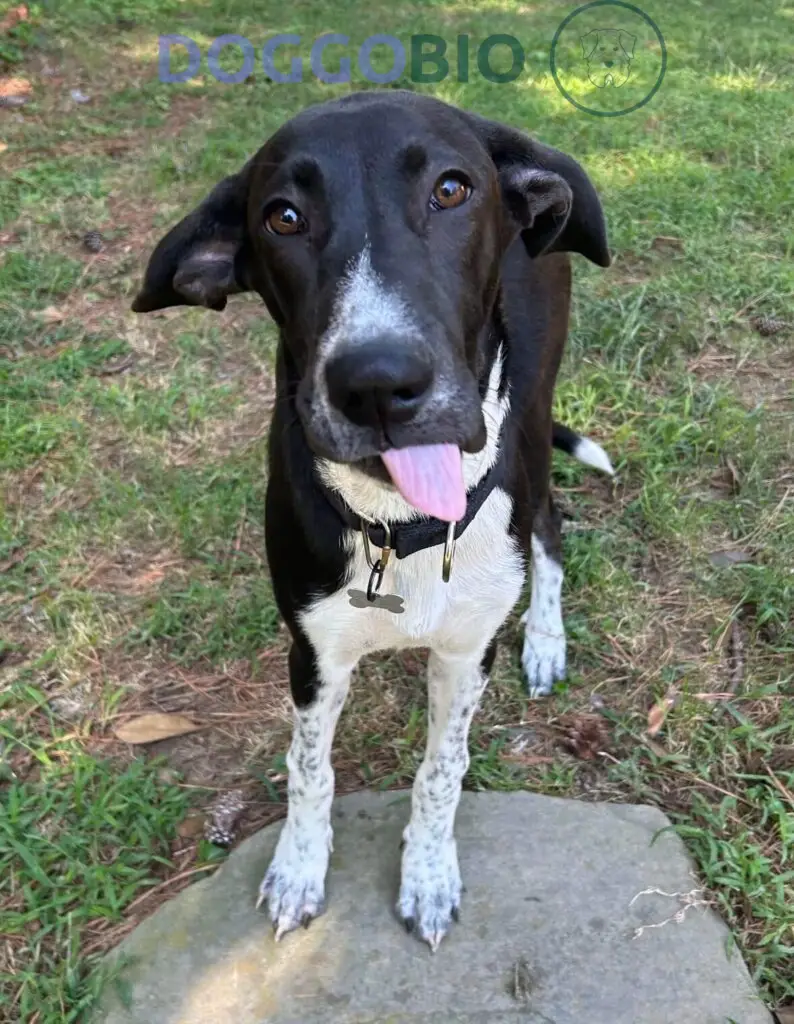
The Great Pyredane is a popular hybrid breed, resulting from the cross between two giant dogs: the Great Dane and the Great Pyrenees.
Great Danes were originally bred for boar hunting and are known for their friendly nature. In contrast, Great Pyrenees are independent and protective sheep guardians.
The Great Pyrenees Great Dane mix is calmer than the energetic Great Dane and more trainable than the strong-willed Great Pyrenees. They require minimal grooming and exercise but shed heavily and can drool, which might not suit those who are concerned about cleanliness.
Due to their size, energy, and vocal tendencies, they’re best suited for larger homes with a secure yard or access to a dog park, rather than apartment living.
Parent Breeds of Great Pyrenees Great Dane mix
The Great Pyredane, a designer dog, is the result of crossing two giant breeds: the Great Dane, a 400-year-old breed initially bred for hunting European boar, and the Great Pyrenees, a white canine with a history of guarding sheep in the Pyrenees Mountains for thousands of years.
History of Great Dane
The Great Dane’s lineage traces back at least four centuries, believed to be a result of crossbreeding between English Mastiffs and Irish Wolfhounds. They were bred specifically for hunting the formidable European boar, and their popularity soared in Germany during the 1500s.
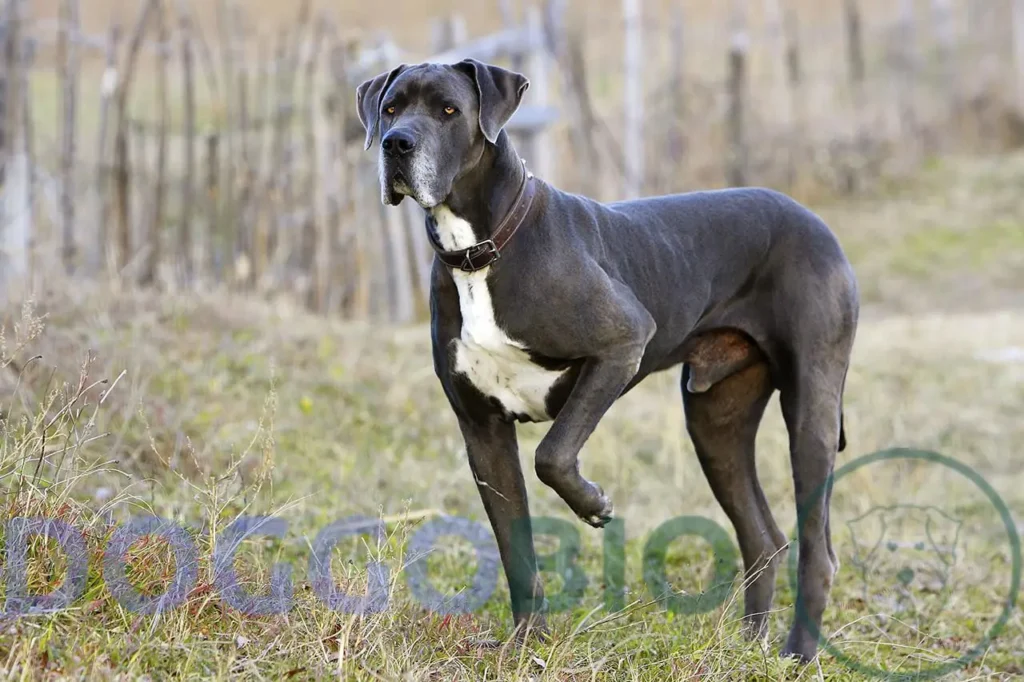
By 1876, they were declared the National Dog of Germany, known as the Deutsche Dogge. In the United States, they gained popularity in the late 1800s, often serving as watchdogs and family companions.
History of the Great Pyrenees
The Great Pyrenees, also known as the Pyrenean Mountain Dog in the UK and Europe, has a long history dating back around three thousand years. They’ve been loyal companions to shepherds and guardians of sheep in the Pyrenees Mountains. Their origin before this period is uncertain, but they may be descendants of ancient Asian flock guardians.
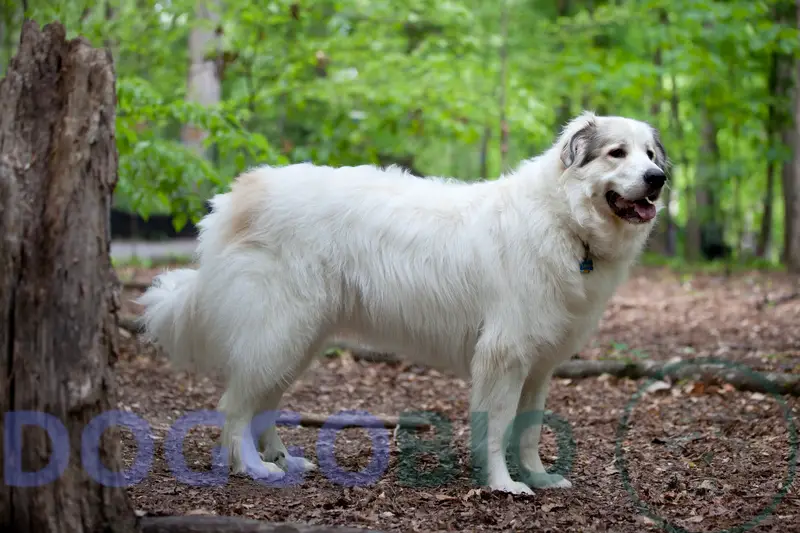
Throughout French history, they’ve been portrayed in art and literature, not just as sheep protectors but also as property guardians and jailer dogs. In the 1600s, Dauphin Louis XIV honored them as the Royal Dog of France, and they influenced the development of modern Newfoundland and Landseer breeds.
What does a Great Dane Pyrenees mix look like?
A Great Pyrenees Great Dane mix is a massive dog breed, often standing over two feet tall at the shoulder and weighing over a hundred pounds. They have a large rectangular head proportionate to their body, medium-sized almond-shaped eyes (usually brown), high-set ears that fold forward, and a long straight tail, resembling the Great Dane. Some may have a tail with a slight curve, inherited from the Great Pyrenees breed.
Size, height, and Weight
Great Pyredanes are large and muscular dogs, standing over two feet tall at the shoulders.
- Males are typically 29 to 33 inches in height, while females range from 27 to 31 inches.
- In terms of weight, males weigh between 95 and 120 pounds, and females weigh between 80 and 105 pounds.
- These giant dogs take 18 to 24 months to fully develop, with their growth indicated by the size of their paws in relation to their limbs.
| Male Range | Female Range | |
| Height | 29 – 33 inches | 27 – 31 inches |
| Weight | 95 – 120 pounds | 80 – 105 pounds |
Coat colors and Types
In terms of coat characteristics, they can take after either parent breed, but most Great Pyrenees have the soft, short, glossy fur of the Great Dane. Additionally, many of them also boast a short, dense undercoat passed down from the Great Pyrenees.
Temperament and Personality
The Great Pyrenees Great Dane mix is a popular and recognized hybrid breed. They have a unique temperament – reserved and independent compared to Great Danes but more sensitive and eager to please than Great Pyrenees.
They are known for their tolerance towards children and other household animals and usually maintain a calm demeanor. However, supervision is essential when kids interact with them, and climbing on them should be avoided to prevent potential health issues.
While generally mild-mannered, some Great Pyredanes may inherit protective tendencies from the Great Pyrenees, so it’s important to understand and respect this aspect of their temperament for a harmonious and safe environment.
Training and Exercise Requirements
Great Pyrenees Great Dane mixes have lower exercise requirements relative to their size. About 40 to 60 minutes of daily vigorous activity keeps them content. They become calmer as they mature, with occasional bursts of energy.
During adolescence, be mindful not to strain their developing joints. They are vocal and energetic, so apartment living may not be ideal. A spacious home suits them better.
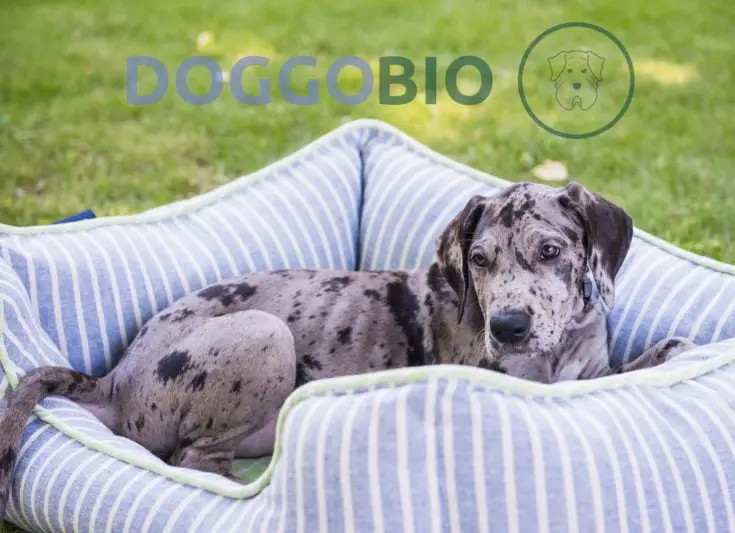
Training may be a bit challenging due to their tendency to lose focus. Use treats and repeat clear commands like “sit” or “stay.” Consistent practice yields positive results. With patience and positive reinforcement, you can create a strong bond with your intelligent and trainable Great Pyredane.
Grooming and Cleaning
Grooming the Great Pyredane is straightforward due to their dirt and water-repellent coat inherited from both parent breeds. Frequent baths are usually unnecessary, even for those with the thick coat of the Great Pyrenees.
They shed year-round, so regular brushing (2-3 times a week) is vital to manage shedding and maintain their coat. Additionally, keep their large, hanging ears clean and check them for potential infections to ensure their ear health.
| Grooming Task | Frequency |
| Bathing | Every 6 to 8 weeks |
| Brushing | 2 – 3 times per week |
| Teeth Brushing | 3 to 4 times per week |
| Nail Trimming | As needed |
| Ear and Eye Cleaning | Weekly check |
Food and Diet
Feeding your Great Pyredane is essential for their health. Choose high-quality, large dog-specific food with natural ingredients and no harmful preservatives. Avoid meat by-products.
Consult your vet for personalized advice on the right food brand and daily portion, usually 4 to 6 cups. Discuss any specialty diets like grain-free options with your vet to ensure your Great Pyredane gets a well-balanced, wholesome diet.
Life Expectancy and Common Health Issues
The Great Pyrenees Great Dane mix typically has a lifespan of around 8 to 12 years.
Regarding health and conditions, the Great Pyredane’s large size may impact its life expectancy. Still, this breed is generally not prone to frequent sickness or injuries, offering a good chance for a healthy life with minimal vet visits.

- Wobblers Syndrome: this neurological condition can cause your dog to exhibit a wobbly gait resembling drunkenness. It occurs due to narrowing vertebrae in the neck, which can pinch a nerve. Early symptoms include unstable back legs and stumbling.
- Osteosarcoma: a malignant tumor of the bone resulting from abnormal cell production responsible for creating and breaking down bone. While longer bones are more commonly affected, this disease can target any bone size and impact non-bony tissue. Look out for signs like lameness and swelling.
- Hip Dysplasia: is a common issue among larger dogs, leading to joint pain and reduced mobility, similar to arthritis. While it typically develops in older age, it can also affect younger dogs. Signs of hip dysplasia include pain, stiffness, decreased activity, and, in some cases, sudden aggression.
- Cancer: is the leading cause of death in older dogs, and the Great Pyredane’s ancestry, particularly from the Great Pyrenee’s side, predisposes them to this risk. The likelihood of cancer increases significantly for this breed after the age of eight, rising each year. While prevention is challenging, veterinarians can offer some treatment options, such as chemotherapy, for certain forms of cancer.
Regular vet check-ups and proper care can contribute to your Great Pyredane’s overall well-being, ensuring a happy and fulfilling life with you.
How Much is a Great Pyrenees Great Dane mix?
Overage a Great Pyrenees Great Dane mix to be around $1,400 to $3,000. Several factors can influence the final price, such as the dog’s color, litter size, and the breeder’s location and reputation.
Remember that aside from the initial purchase price, you should also budget for other expenses related to raising a dog. These additional costs include food, veterinary care, grooming, and training. Preparing for these ongoing expenses will ensure you can provide your Great Pyredane companion with the best care.
Is a Great Pyrenees Great Dane mix the Right Dog for You?
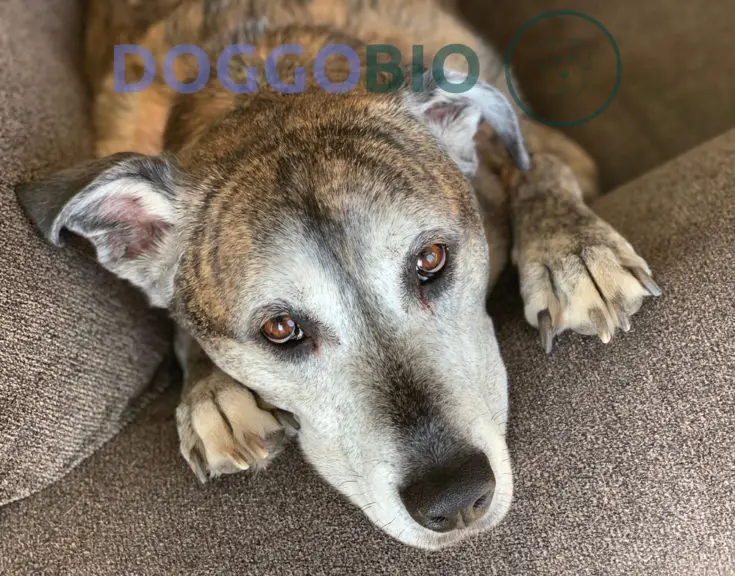
The Great Pyrenees Great Dane Mix can be an excellent choice for many families. This loving and affectionate dog is always eager to please its owners, making it a delightful companion.
As a great family dog, the Great Pyrenees Great Dane mix enjoys being involved in all family activities, bringing joy to everyone around them.
Providing at least 40 minutes of daily physical stimulation, such as running or playing, is essential to keep this breed happy and healthy. This will help them stay active and content.
Overall, if you’re looking for a loving and active addition to your family, the Great Pyrenees & Great Dane Mix could be the perfect fit for you!
List of dogs that are similar to Great Pyrenees Great Dane mix
- Great Dane-Boxer Mix
- Blue Merle Great Dane
- Great Dane-Cane Corso mix
- Great Pyrenees-German Shepherd Mix
- Great Pyrenees-Golden Retriever Mix
- Great Pyrenees-Pitbull Mix
Frequently Asked Questions
Is a Great Pyredane Aggressive?
Not! The Great Pyrenees Great Dane mix is not an aggressive breed. While their size might appear imposing to some, they are generally gentle and not prone to extreme aggressiveness.
These loving dogs are known to be loyal protectors of their families and will step up to defend them if they sense any threat. However, their instinct to protect should not be mistaken for inherent aggression, as they are typically friendly and well-mannered companions.
How Long Can a Great Pyredane Live?
The Great Pyrenees Great Dane mix can be your loyal companion for 8 to 12 years with proper nutrition, sufficient rest, and regular exercise. Taking good care of this magnificent dog will ensure many happy years together.
Does Great Pyredane get along with other pets?
Yes! The Great Pyredane is a beautiful addition to a multi-pet household. This breed exhibits remarkable friendliness towards all animals and harmonizes harmoniously with furry companions.
With an inherently gentle nature, the Great Pyredane rarely sees other animals as foes, except when protecting its cherished housemates from the occasional intruder.
You might be pleasantly surprised that even in the presence of rabbits or squirrels in your yard, the Great Pyrenees Great Dane mix is more inclined to engage in playful pursuits rather than pursuing them aggressively. Their playful chases are often just for fun, making them a friendly member of the pet pack.
Does a Great Pyrenees Great Dane mix Shed?
Yes, Great Pyrenees Great Dane mix does shed moderately throughout the year. Depending on the individual dog’s coat, those with thicker undercoats may shed more during the fall and spring seasons as their coat adapts to changing temperatures.
Are Great Pyredane hypoallergenic?
No, the Great Pyrenees Great Dane mix is not hypoallergenic. These beautiful dogs shed moderately throughout the year, and their loose hairs can carry dander and dried saliva, which may trigger allergies in sensitive individuals.
Suppose you or someone in your household has allergies. In that case, it’s essential to be aware of this shedding tendency and take appropriate measures to manage the allergens, such as regular grooming and cleaning routines.
Conclusion
In conclusion, the Great Pyrenees Great Dane mix is a captivating and majestic hybrid that combines the best qualities of its parent breeds. With a gentle nature from the Great Pyrenees and a loyal demeanor from the Great Dane, this crossbreed makes for a remarkable and loving companion.
Responsible pet ownership and care will ensure a fulfilling and devoted relationship with this enchanting canine. Embrace the wonders of the Great Pyredane, and you’ll experience the joy it brings for years.

Pingback: Cane Corso Great Dane mix: Power and Grace Merge 2024
Pingback: Great Pyrenees German Shepherd Mix: Hybrid Harmony 2024
Pingback: Great Dane Boxer Mix: Dynamic Duo Unleashed 2024
Pingback: Great Pyrenees Golden Retriever Mix: An Enchanting Breed2024